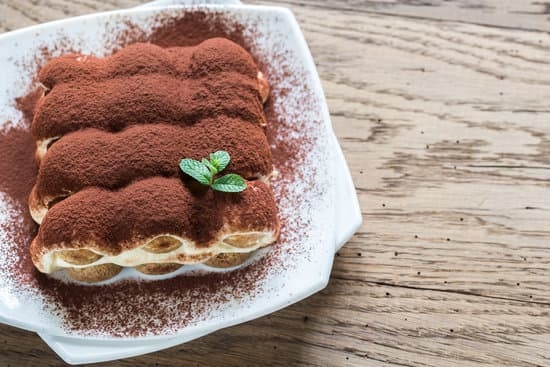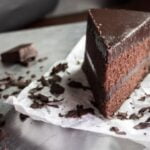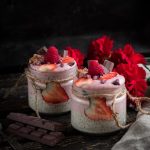Hard cake decorations are an essential aspect of cake decorating, adding a touch of elegance and creativity to any baked masterpiece. In this article, we will delve into the world of hard cake decorations and explore how they can elevate the overall look of a cake. From fondant to gum paste, royal icing to modeling chocolate, these versatile decorations offer endless possibilities for enhancing the visual appeal of your cakes.
When it comes to creating beautiful cakes, hard cake decorations play a crucial role in bringing your artistic vision to life. Whether you are crafting intricate designs or simple embellishments, these decorations add texture, dimension, and style to your creations. With the right tools and techniques, you can transform a plain cake into a work of art that is sure to impress your guests.
In the following sections, we will discuss the types of hard cake decorations available, the tools and materials needed to create them, as well as provide a step-by-step guide on how to make these stunning embellishments. Additionally, we will share expert tips and tricks for working with hard cake decorations, including coloring techniques and storage practices.
Join us on this creative journey as we explore the world of hard cake decorations and discover how you can take your baking skills to new heights.
Types of Hard Cake Decorations
When it comes to creating beautiful and intricate cake decorations, using hard mediums such as fondant, gum paste, royal icing, and modeling chocolate can take your cakes to the next level. Each of these types of decorations offers unique characteristics and benefits that can elevate the overall look of your cake. Here is a breakdown of each type:
- Fondant: Fondant is a versatile sugar paste that can be rolled out into a smooth sheet and draped over cakes for a flawless finish. It can also be molded into various shapes and figures for creative designs.
- Gum Paste: Gum paste is a pliable sugar dough that dries quickly and hardens well, making it perfect for creating delicate flowers, intricate details, and 3D decorations.
- Royal Icing: Royal icing is made from powdered sugar and egg whites, giving it a smooth consistency when dry. It is commonly used for piping intricate designs, creating lace patterns, and making edible decorations.
- Modeling Chocolate: Modeling chocolate is a blend of melted chocolate and corn syrup that forms a pliable paste. It can be sculpted into shapes, figures, and textures with ease.
Each type of hard cake decoration has its strengths and purposes in cake decorating. Experimenting with these mediums will allow you to explore different techniques and styles in creating stunning edible art pieces. Now let’s delve into how to make hard cake decorations using these materials effectively.
To create beautiful hard cake decorations like fondant flowers or gum paste figurines, you will need the right tools and materials to achieve success. Here are some essential items you may need:
- Rolling pin: For rolling out fondant or gum paste to desired thickness.
- Cutters: For cutting out shapes such as flowers, leaves, or other decorative elements.
- Shaping tools: Such as ball tools or veining tools for detailing and shaping fondant or gum paste decorations.
Having these tools on hand will make the process of creating hard cake decorations much smoother and more enjoyable. Now let’s move on to learn how to make hard cake decorations step by step.
Tools and Materials Needed
List of Tools and Materials
When it comes to making hard cake decorations, having the right tools and materials is essential to ensure the success of your creations. Here is a comprehensive list of what you will need:
1. Rolling Pin: A good quality rolling pin is essential for rolling out your fondant, gum paste, or modeling chocolate to the desired thickness.
2. Cutters: Various shapes and sizes of cutters will help you create different designs and patterns for your cake decorations.
3. Shaping Tools: Tools such as ball tools, veining tools, and sculpting tools will help you shape and mold your decorations with precision.
4. Fondant Smoothers: These tools are crucial for achieving smooth surfaces on your fondant or gum paste decorations.
5. Edible Glue: Edible glue is necessary for adhering different pieces of decorations together securely.
6. Dusting Powders: These powders can be used to add color or shimmer to your decorations.
7. Piping Bags and Tips: Royal icing decorations often require piping bags and various tips for intricate designs.
Additional Supplies
8. Cornstarch or Powdered Sugar: Dusting your work surface with cornstarch or powdered sugar will prevent sticking when working with fondant or gum paste.
9. Food Coloring: Gel food coloring is best suited for coloring fondant and gum paste as it provides vibrant colors without affecting the consistency.
10. Metallic Paints: For adding metallic finishes to your decorations, metallic paints specially made for edible use are perfect.
Having these tools and materials ready before starting your project will make the process of creating hard cake decorations much smoother.
Shopping Tips
When purchasing tools and materials for making hard cake decorations, look for high-quality products that are specifically designed for use in cake decorating. Investing in good quality items will not only make the process easier but also ensure professional-looking results. Additionally, consider checking online tutorials and reviews to understand the best brands and options available in the market to suit your needs.
Step-by-Step Guide
To create stunning hard cake decorations, it is essential to follow a detailed step-by-step guide that covers the entire process from start to finish. Whether you are a beginner or an experienced baker looking to enhance your decorating skills, mastering the art of making hard cake decorations can truly elevate the overall look of your cakes.
Preparing the Dough
The first step in making hard cake decorations is preparing the dough. Depending on the type of decoration you are creating – fondant, gum paste, royal icing, or modeling chocolate – you will need to follow a specific recipe and technique. For example, if you are working with fondant or gum paste, make sure to knead the dough until smooth and pliable.
On the other hand, royal icing requires careful mixing to achieve the right consistency for piping intricate designs. Understanding the characteristics of each type of dough is key to successful decoration making.
Shaping and Drying
Once you have prepared the dough, it’s time to shape your decorations. Use tools such as rolling pins, cutters, and shaping tools to create intricate designs or simple shapes depending on your desired outcome. Be patient and work slowly when shaping your decorations to ensure precision and attention to detail.
After shaping your decorations, allow them to dry thoroughly before placing them on your cake. This step is crucial in ensuring that your decorations hold their shape and do not lose their structural integrity.
Finishing Touches
After your hard cake decorations have dried completely, make any final touches such as adding additional details or painting them with edible colors for a pop of vibrancy. Take your time with this step and pay attention to small details that can make a big difference in the overall appearance of your decorations.
Once completed, carefully place them on your cake using edible glue or royal icing for secure attachment. By following these step-by-step guide tips on how to make hard cake decorations, you can be sure to impress your family and friends with beautifully decorated cakes every time.
Tips and Tricks
Hard cake decorations can truly take your cake decorating game to the next level, adding intricate details and stunning designs that elevate the overall look of your creation. However, working with hard cake decorations requires a certain level of skill and knowledge to ensure successful results. One of the key aspects to mastering hard cake decorations is knowing how to handle them properly to achieve those intricate designs without any cracks or mishaps.
To achieve intricate designs when working with hard cake decorations like fondant, gum paste, royal icing, or modeling chocolate, it’s essential to have the right tools at your disposal. Investing in quality shaping tools, precision cutters, and embossing mats can make all the difference in creating detailed and visually appealing decorations for your cakes. Additionally, practicing various techniques such as piping, molding, and sculpting will help you improve your skills over time.
Preventing cracking in hard cake decorations is a common challenge that many bakers face. One useful tip to avoid cracks is to knead and roll out your fondant or gum paste evenly before shaping it. This ensures a smooth and consistent texture throughout the decoration.
Another trick is to let your finished decorations dry completely before placing them on the cake. This helps maintain their shape and prevents any unwanted cracks from forming during the decorating process. By following these expert tips and tricks, you’ll be able to work with hard cake decorations more efficiently and achieve flawless results every time.
| Expert Tips for Working With Hard Cake Decorations | Preventing Cracking in Hard Cake Decorations |
|---|---|
| Invest in quality shaping tools | Knead and roll out fondant evenly |
| Practice various techniques like piping and molding | Let decorations dry completely before placing them on the cake |
Coloring Techniques
When it comes to making hard cake decorations, choosing the right colors and coloring techniques can truly elevate the appearance of your creations. Gel food coloring is a popular choice among bakers due to its vibrant hues and easy-to-mix consistency. Gel food coloring comes in a wide array of shades, allowing you to create custom colors by blending different tones together.
When using gel food coloring for hard cake decorations like fondant or gum paste, remember that a little goes a long way. Start with a small amount and gradually add more until you achieve the desired color intensity.
Another coloring technique commonly used for hard cake decorations is edible dust. Edible dust comes in powder form and can be brushed onto dry surfaces to add shimmer and depth to your designs. It is perfect for creating a metallic or pearlized finish on decorations like flowers or intricate detailing on cakes.
To apply edible dust, use a soft brush to gently dab or sweep the powder onto the surface of your decoration. You can also mix edible dust with clear alcohol or lemon extract to create a paint-like consistency for more precise application.
For those looking to add a touch of luxury to their hard cake decorations, metallic paints are an excellent choice. Metallic paints are specially formulated edible paints that provide a high-shine finish reminiscent of real metal. These paints often come in gold, silver, bronze, and copper shades, adding elegance and glamour to any cake design.
To use metallic paints on your decorations, simply load a fine-tipped brush with paint and carefully apply it to the desired areas. Allow the paint to dry completely before handling or storing your decorations for best results.
| Gel Food Coloring | Edible Dust | Metallic Paints |
|---|---|---|
| Popular choice due to vibrant hues | Comes in powder form for shimmer | High-shine finish reminiscent of real metal |
| Easy-to-mix consistency | Brushed onto dry surfaces for depth | Adds elegance and glamour |
| A little goes a long way | Can be mixed with alcohol/extract for paint-like consistency | Come in gold, silver, bronze & copper shades |
Storage and Preservation
When it comes to creating hard cake decorations, ensuring that your creations stay fresh and intact is essential. Proper storage and preservation techniques can make a huge difference in maintaining the quality of your decorations over time. Here are some tips and best practices for keeping your fondant, gum paste, royal icing, or modeling chocolate decorations in top shape:
- Store in an airtight container: After making your hard cake decorations, it is crucial to store them in an airtight container to prevent them from drying out or absorbing moisture from the surroundings.
- Keep away from direct sunlight: Direct sunlight can cause colors to fade and ingredients to break down, so it’s important to store your decorations in a cool, dark place away from any sources of light.
- Use silica gel packs: Placing silica gel packs in the container with your decorations can help absorb any excess moisture and keep them dry and fresh for longer periods.
Additionally, if you have leftover hard cake decorations that you want to preserve for future use, consider freezing them for extended shelf life. Wrap each decoration individually in plastic wrap before placing them in an airtight container or freezer bag. When you’re ready to use them again, allow them to thaw at room temperature before applying them to your cakes.
Remember that different types of hard cake decorations may have varying shelf lives, so it’s essential to follow specific guidelines for each type. By following these storage and preservation tips, you can ensure that your beautiful creations remain fresh and vibrant until you’re ready to showcase them on your next masterpiece.
Creative Applications
Hard cake decorations are not just a finishing touch on a cake; they are an essential element that can truly elevate the overall look and feel of your creation. From adding intricate details to creating breathtaking designs, these edible decorations have the power to transform a simple dessert into a work of art.
If you’ve ever wondered how to make hard cake decorations that will wow your guests, look no further – we have you covered with all the tips and tricks you need.
One of the key aspects of mastering the art of hard cake decorations is understanding the different types available. From versatile fondant to delicate royal icing, each medium offers unique characteristics that can be used to achieve stunning results. Whether you prefer working with gum paste for intricate floral designs or modeling chocolate for sculpting realistic figurines, there is a wide range of options to explore and experiment with.
When it comes to creating show-stopping hard cake decorations, having the right tools and materials is essential. Investing in quality supplies such as rolling pins, cutters, and shaping tools can make a world of difference in the final outcome of your creations.
Additionally, following a step-by-step guide that outlines the process from start to finish – from preparing the dough to shaping and drying – will help ensure success in your decorating endeavors. By incorporating expert tips on coloring techniques and storage practices, you can preserve your hard cake decorations for longer periods and continue to impress with your culinary skills.
Frequently Asked Questions
How Do You Make Hard Sugar Cake Decorations?
Hard sugar cake decorations are made by heating sugar until it reaches the hard crack stage, around 300°F. This melted sugar is then poured onto a silicone mat or parchment paper to cool and harden before being broken into desired shapes.
How to Make Hard Candy Decorations for Cakes?
To make hard candy decorations for cakes, start by heating sugar, water, and corn syrup in a saucepan until it reaches the hard crack stage. Once ready, add color and flavoring before pouring onto a prepared surface to cool. Break into pieces once hardened.
What Cake Frosting Gets Hard?
Royal icing is a popular cake frosting that gets hard when dried. Made from confectioners’ sugar and egg whites or meringue powder, this icing dries to a smooth, solid finish that is great for intricate designs and decorations on cakes.

Welcome to our cake decorating blog! My name is Destiny Flores, and I am the proud owner of a cake decorating business named Cake Karma. Our mission is to provide delicious, beautiful cakes for all occasions. We specialize in creating custom cakes that are tailored specifically to each customer’s individual needs and tastes.





